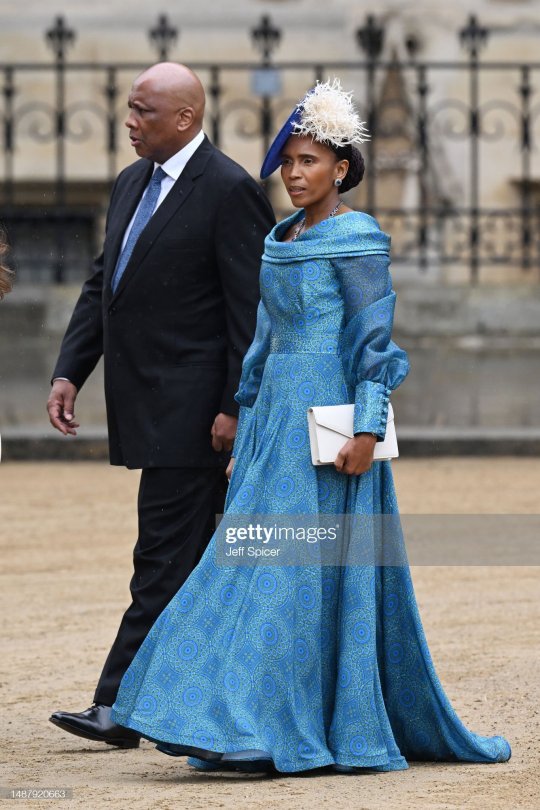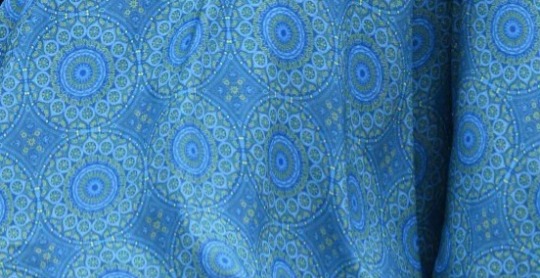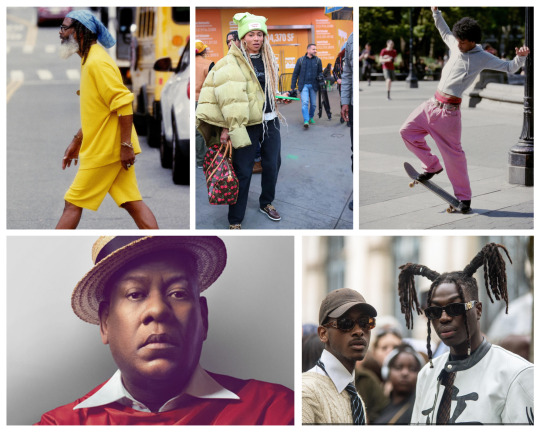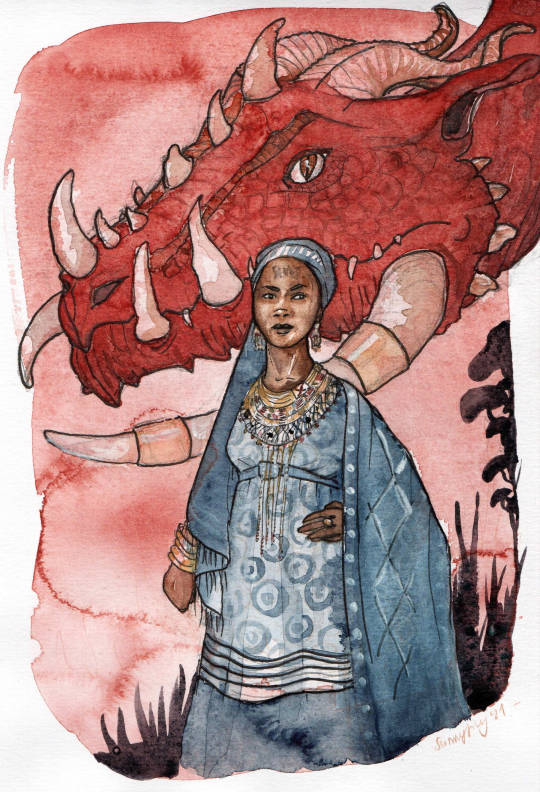#Shweshwe Dresses
Explore tagged Tumblr posts
Text
39 Amazing Shweshwe Designs for Ladies to Catch the Eyes
Shweshwe designs for ladies are a captivating fusion of tradition and modern fashion, making this fabric a staple in African fashion. Known for its intricate patterns and vibrant colors, Shweshwe originated in Southern Africa and is deeply rooted in the cultural attire of groups such as the Xhosa, Zulu, and Sotho. Today, however, it has transcended its traditional roots and is now worn by women…
0 notes
Text
39 Latest Shweshwe Wedding Dresses 2024 - To Copy Now
Shweshwe Fabric is one of South Africa’s largest textile producers and a type of dyed and printed cotton fabric used in traditional South-African attires., so, you can explore our collection of the latest 39 modern Shweshwe wedding dresses designs that are perfect to wear for any special occasion or bridal events in 2024. South African brides favor vibrant Shweshwe wedding dresses that celebrate…
0 notes
Text


King Letsie III and Queen Masenate of Lesotho at the Coronation of King Charles III
Queen Masenate is wearing a gown whose colour and print is reminiscent of shweshwe, a printed dyed cotton fabric, often using indigo blue, widely used for both traditional and fashionable dress in Lesotho and South Africa.
'The local name shweshwe is derived from the fabric's association with Lesotho's King Moshoeshoe I, also spelled "Moshweshwe". Moshoeshoe I was gifted with the fabric by French missionaries in the 1840s and subsequently popularised it.
It is also known as sejeremane or seshoeshoe in Sotho as well as terantala (derived from Afrikaans tarentaal), and ujamani in Xhosa, after 19th century German and Swiss settlers who imported the blaudruck ("blue print") fabric for their clothing and helped entrench it in South African and Basotho culture.' X
#king charles coronation#coronation#king charles iii#king charles the third#queen masenate of lesotho#fashion#print#pattern#surface pattern#pattern design#surface pattern design#textile design#textiles#printed textiles#traditional textiles#2023#lesotho#african royalty#shweshwe#seshoeshoe#sejeremane#ujamani#terantala#isishweshwe#picotage#indigo#discharge process
26 notes
·
View notes
Text
Black Contribution to Fashion and Wardrobe in the West: Past, Present and Future
How We Arrived | A Brief Recount with Many Threads
Fashion is a form of communication that reflects the identity, culture and values of individuals and groups. Fashion is also influenced by the social, political and economic contexts of different times and places. Throughout history, Black people have contributed to fashion and wardrobe in the West in various ways, from creating original styles and trends to challenging stereotypes and discrimination. In this article, we will explore some of the aspects of Black contribution to fashion and wardrobe in the West, and how they might shape the future of fashion.

The Origins of Black Fashion
Black fashion has its roots in the diverse cultures and traditions of Africa, where clothing was not only a functional necessity, but also a symbolic expression of status, religion, ethnicity and aesthetics. African textiles, such as kente, adire, bogolan and shweshwe, were made with intricate techniques and patterns, and often dyed with natural colors from plants and minerals. African clothing, such as dashikis, kaftans, boubous and agbadas, were designed to fit the climate and the lifestyle of the people, and often embellished with beads, shells, feathers and metalwork. African fashion also reflected the influence of other cultures, such as Arab, European and Asian, through trade, migration and colonization.
The Impact of Slavery and Colonialism
The transatlantic slave trade and the colonization of Africa by European powers had a profound impact on the fashion and wardrobe of Black people in the West. Enslaved Africans were stripped of their cultural identity and forced to wear the clothing of their oppressors, which was often cheap, coarse and ill-fitting. However, enslaved Africans also resisted and adapted to their situation by modifying, embellishing and personalizing their clothing, using scraps of fabric, buttons, ribbons and jewelry. They also preserved and transmitted some of their cultural heritage through their clothing, such as headwraps, turbans, bandanas and scarves, which were worn for protection, modesty and dignity. Some enslaved Africans also managed to acquire or make finer clothing, especially for special occasions, such as weddings, funerals and holidays, which allowed them to express their individuality, creativity and pride.
The Rise of Black Fashion Movements
The abolition of slavery and the civil rights movement in the 19th and 20th centuries gave rise to various Black fashion movements that challenged the dominant norms and standards of beauty, and celebrated the diversity and richness of Black culture. Some of the examples of these movements are:
The Harlem Renaissance: A cultural and artistic movement that emerged in the 1920s and 1930s in Harlem, New York, where Black artists, writers, musicians and intellectuals created a vibrant and influential scene that showcased their talents and achievements. The Harlem Renaissance also influenced fashion, as Black people adopted and adapted the styles of the Jazz Age, such as flapper dresses, zoot suits, fedoras and pearls, and added their own flair and elegance. Some of the icons of this movement were Josephine Baker, Billie Holiday, Langston Hughes and Zora Neale Hurston.
The Black Power Movement: A political and social movement that emerged in the 1960s and 1970s in the United States, where Black people demanded their rights, freedom and justice, and asserted their identity, dignity and self-determination. The Black Power Movement also influenced fashion, as Black people embraced and reclaimed their African roots, and expressed their solidarity and resistance. Some of the styles of this movement were Afros, cornrows, braids, dashikis, leather jackets, berets and sunglasses. Some of the icons of this movement were Malcolm X, Angela Davis, Huey P. Newton and Kathleen Cleaver.
The Hip Hop Movement: A cultural and artistic movement that emerged in the 1970s and 1980s in the Bronx, New York, where Black and Latino youth created a new form of music, dance, art and fashion that reflected their realities, experiences and aspirations. The Hip Hop Movement also influenced fashion, as Black and Latino youth innovated and experimented with different styles, such as baggy jeans, sneakers, tracksuits, baseball caps, gold chains and graffiti. Some of the icons of this movement were Grandmaster Flash, Run-DMC, LL Cool J and Salt-N-Pepa.

The Influence of Black Fashion on the Mainstream
Black fashion has not only been a source of inspiration and empowerment for Black people, but also a source of influence and appropriation for the mainstream fashion industry and culture. Black fashion has often been copied, imitated and commodified by white designers, celebrities and consumers, who have profited from the creativity and originality of Black people, without giving them proper credit, recognition or compensation. Some of the examples of this phenomenon are:
The minstrel shows: A form of entertainment that originated in the 19th century in the United States, where white performers wore blackface and exaggerated costumes to mock and stereotype Black people and their culture. The minstrel shows also influenced fashion, as white people adopted and adapted some of the clothing and accessories of Black people, such as hoop skirts, bandanas, gloves and canes, and used them for amusement and mockery.
The orientalism: A form of representation that originated in the 19th and 20th centuries in Europe and the United States, where white artists, writers and scholars depicted and distorted the cultures and peoples of Asia, Africa and the Middle East as exotic, mysterious and inferior. Orientalism also influenced fashion, as white designers, celebrities and consumers adopted and adapted some of the clothing and accessories of these regions, such as turbans, kaftans, kimonos and harem pants, and used them for fantasy and fetishism.
The cultural appropriation: A form of exploitation that occurs in the contemporary globalized world, where white designers, celebrities and consumers adopt and adapt some of the clothing and accessories of marginalized and oppressed cultures, such as Native American headdresses, Indian bindis, African prints and dreadlocks, and use them for fashion and fun, without respecting or understanding their meanings and histories.

The Future of Black Fashion
Black fashion has a long and rich history that reflects the struggles and achievements of Black people in the West and beyond. Black fashion also has a bright and promising future that offers new possibilities and opportunities for Black people to express their identity, culture and values. Some of the trends and developments that might shape the future of Black fashion are:
The Afrofuturism: A form of imagination that envisions the future of Black people and their culture in relation to science, technology and innovation. Afrofuturism also influences fashion, as Black people create and wear clothing and accessories that combine elements of their African heritage and their futuristic aspirations. Some of the examples of this trend are the movie Black Panther, the singer Janelle Monáe and the designer Mowalola Ogunlesi.
The sustainability: A form of awareness that recognizes the environmental and social impacts of the fashion industry and its practices. Sustainability also influences fashion, as Black people create and wear clothing and accessories that are made with ethical, organic and recycled materials, and that support local, fair and diverse production. Some of the examples of this trend are the brand Lemlem, the model Adwoa Aboah and the activist Dominique Drakeford.
The diversity: A form of inclusion that celebrates and respects the differences and similarities among Black people and their culture. Diversity also influences fashion, as Black people create and wear clothing and accessories that reflect their various identities, such as gender, sexuality, class, religion and disability. Some of the examples of this trend are the magazine CRWN, the actor Billy Porter and the designer Sinéad Burke.
Black fashion is a powerful and dynamic phenomenon that has contributed to fashion and wardrobe in the West in many ways. Black fashion is also a potential and transformative phenomenon that can contribute to fashion and wardrobe in the West in many more ways. Black fashion is not only a form of communication, but also a form of expression, resistance and liberation.
Amid a period when history classes might opt to reinterpret the Black influence, fashion schools are progressively integrating Black fashion history into their curricula, all credited to the efforts of committed educators. These educators employ diverse methodologies—lectures, discussions, and practical projects—to impart the narrative of Black fashion history. Additionally, they actively strive to broaden the spectrum of Black fashion designers and styles presented within the classroom setting.
Here are some of the experts, educators and advocates for continued education in the evolutionary process of Black Fashion:
- Dr. Jonathan Square, assistant professor of Black Visual Culture at Parsons School of Design and founder of Fashioning the Self in Slavery and Freedom, who teaches courses on Black beauty culture and Black fashion history, and organizes events and exhibitions on these topics
- Dr. Tanisha C. Ford, associate professor of Africana Studies and History at the University of Delaware and author of Liberated Threads: Black Women, Style, and the Global Politics of Soul, who explores the connections between fashion, activism and social movements, and co-curated the exhibition Black Girlhood and the Power of Belonging at the Delaware Art Museum.
- Dr. Monica L. Miller, associate professor of English and Africana Studies at Barnard College and author of Slaves to Fashion: Black Dandyism and the Styling of Black Diasporic Identity, who examines the role of fashion in shaping Black identity and culture, and co-edited the book Black Dandyism: A Reader.
- Elizabeth Way, associate curator of costume at The Museum at FIT and co-curator of the exhibition Black Fashion Designers, who researches and showcases the work of Black fashion designers from different eras and regions, and organizes public programs and publications on Black fashion history.
*see also The Experts Bringing Black Fashion History to Fashion Education: https://fashionista.com/2023/10/experts-teaching-black-fashion-history by Fashionista:

Empowering Movements in Black Fashion
The unique expression and activism within Black culture persistently shape fashion's diversity and interconnectedness. This influence resonates through the multicultural fabric of humanity, impacting even mainstream trends, notwithstanding past challenges of appropriation and insufficient acknowledgment.
Discover the world of Black fashion and become an active participant in its vibrant tapestry! Here are actionable steps to engage with and support Black fashion:
Attend Exhibitions: Showcasing Black designers and movements.
Support Black-Owned Businesses: Empower Black entrepreneurship by consciously choosing to support Black-owned fashion brands.
Educate Yourself: Explore the rich history of Black fashion, discover how these contributions have effected your style.
Black fashion is a global style panorama. Thank you for reading, comment, like and follow.
3 notes
·
View notes
Photo

Shweshwe Dresses: A Celebration Of Heritage And Modern Styles
0 notes
Text
Traditional African Shweshwe Dresses Styles For Woman
Traditional African Shweshwe Dresses Styles For Woman

Traditional African Shweshwe Dresses Conventional African Shweshwe Dresses Styles: Shweshwe styles attire types has transformed into a staple for African American woman who uses the Shweshwe surface for the ordinary dress similarly as the in vogue and standard wedding apparel dresses.
Shweshwe dresses, African dress, African fashion
It has even made a look on the runway, with present-day African…
View On WordPress
#African dress#African fashion#Fabulous South African Shweshwe fashion styles#Latest Shweshwe Styles for Fashion#Shweshwe Dresses#Traditional African Shweshwe Dresses
0 notes
Photo

"My husband is dead," she said, with finality, "and my daughters will be raised proud children of the Tswana here, not as beggars in England."
Naomi Novik, Empire of Ivory
I finally managed to colour Lethabo and Kefentse, my beloveds! I just love the way the Temeraire series contains so many unconventional woman leaders.
(By way of apology, I really wanted to make her dress historically accurate, but it seems I screwed up: googling Tswana traditional dresses turned up a lot of very pretty indigo printed shweshwe fabrics. Which - as I found out AFTER I’d whipped out the watercolours - were only introduced into South Africa in the mid-1800s. Oopsie. There is a brief history of Tswana clothing here.)
387 notes
·
View notes
Text
39 Shweshwe Traditional Gown Ideas 2024- Best for Brides
Shweshwe traditional gowns have become a popular choice for brides who want to embrace their cultural heritage while making a bold fashion statement. Known for their vibrant colors, intricate patterns, and timeless elegance, Shweshwe gowns offer endless possibilities for brides who want to blend tradition with modern flair. In this collection of 39 stunning Shweshwe traditional gown ideas for…
0 notes
Text
26 Latest Shweshwe Dresses Patterns 2024 - Best for Ladies
#Shweshwe attire for plus size#shweshwe designs#Shweshwe dresses#shweshwe wedding dress#traditional attire
0 notes
Text
Ten African fabrics you should know
Ten African fabrics you should know
TEN AFRICAN FABRICS. 1. Adire Fabric 2. Shweshwe Fabric 3. Basotho Blanket 4. Ankara fabric/African wax print 5. Aso oke 6. Kente fabric 7. Dashiki print 8. Bogolan fabric 9. Bark Cloth 10. Baoule fabric PHOTO CREDIT Bark cloth dress- https://costumeinterpretation.wordpre… ANKARA SPORTSWEAR- https://www.culturefitclothing.com/ MUDCLOTH HUNTERS TUNIC—…
View On WordPress
3 notes
·
View notes
Video
youtube
2021 GORGEOUS & FABULOUS #AFRICAN FASHION DRESSES & #SHWESHWE BEAUTIFUL ...
3 notes
·
View notes
Link
Attractive shweshwe dresses For Women 2019 - https://liz.sokakbul.com/attractive-shweshwe-dresses-for-women-2019/626Attractive shweshwe dresses For Women 2019 Attractive shweshwe dresses For Women 2019
1 note
·
View note
Text
Beautiful Shweshwe Mixed Dresses For Woman 2020
Beautiful Shweshwe Mixed Dresses For Woman 2020

Beautiful Shweshwe Mixed Dresses Lovely Shweshwe Mixed Dresses, From ordinary articles of clothing to streetwear to high mold: isiShweshwe’s material change from the area, of workwear to searched for after plan was unexpected yet minute.
Appearing first on the runways in South Africa, isiShweshwe a little while later gathered overall thought, in view of the different close by modelers who mirror…
View On WordPress
0 notes
Text
26 Best Shweshwe Wedding Dresses for Makoti 2024
Shweshwe wedding dresses have become a significant part of modern South African bridal fashion, especially for the Makoti (bride) who wants to embrace cultural heritage while looking stunning on her big day. As we step into 2024, the trend of Shweshwe wedding dresses continues to evolve, offering a beautiful blend of traditional patterns with contemporary styles. Shweshwe fabric, originally known…
0 notes
Text
35+ Latest Sotho Shweshwe Dresses - Best for Young Ladies 2024
In 2024, Shweshwe dress designs in South Africa continue to evolve and innovate, enhancing their beauty and appeal on the global stage. These designs combine authenticity and modernity, where traditional sotho shweshwe dresses are reimagined with modern touches. Among the standout looks this year, we see dresses with asymmetric hems, which add an element of drama and movement, and layered…
0 notes
Link
0 notes